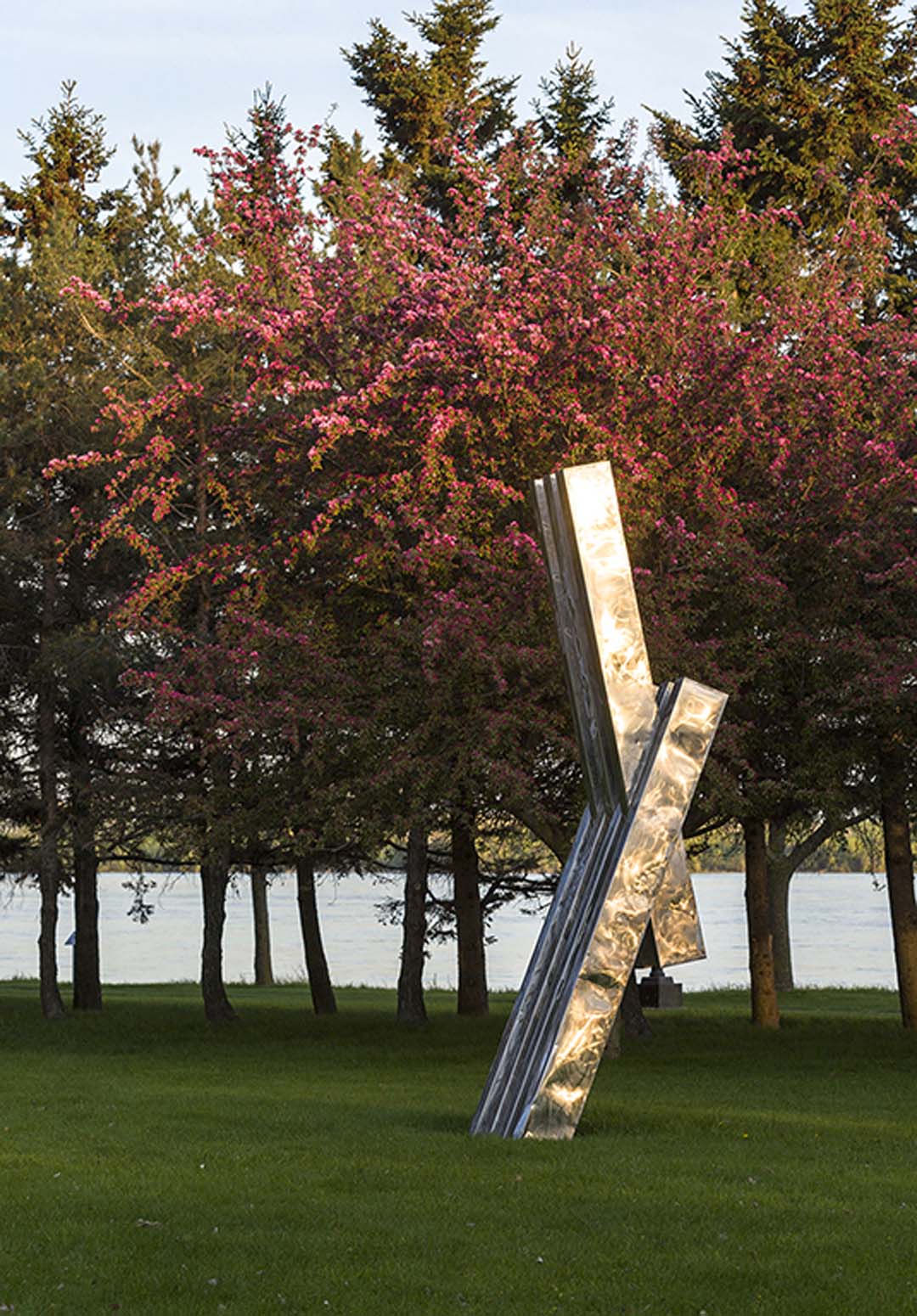

Romanian-born Octavian Olariu has lived and worked in Montréal since 1980. He studied at the Ion Andreescu fine arts institute in Cluj, Romania. In 1978, he was a guest of honour at the Venice Biennale, where he presented 10 wood sculptures. He is also known for having produced, in 1989, the largest monoxylous (made of a single piece of wood) sculpture in the world, in Osopo, Italy. Olariu has participated in numerous symposiums all over the world, and his works are in numerous public and private collections.
- 7 Artworks
- 50min 20min
- Lachine Museum
 Parc René-Lévesque
Parc René-Lévesque 
Artwork description
Although it is abstract, Olariu’s sculpture evokes the mechanism of locks in the nearby Lachine Canal and refers to the pivoting of the sluice gates that regulate their water level. The artwork is composed of four stainless steel beams set in the ground at an angle, between which are set three more beams angled in the opposite direction. The grouping creates the impression of a movable joint.
Having first devoted himself to wood sculpture, in the late 1980s Olariu turned to stainless steel. He made a number of works, including Écluses, in which he explored a repertoire of forms with simple lines galvanized by this material. Many of these sculptures feature overlapping modules and the articulation of elements between them. They simulate a possible movement, a sequence. Here, the seaway facilities inspired the artist. As he has done in other of his works of public art, Olariu structured the elements so that they seem to have a mechanical quality or dynamic force that could lead to a change in their shape.




